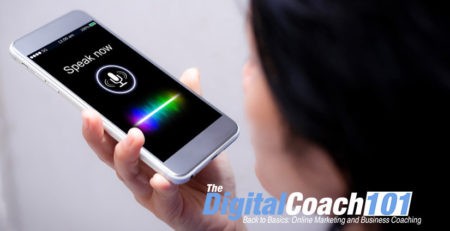The Secret Formula of Search Intent
You know that digital marketing is a necessity in 21st Century business – nobody is arguing that point. What people seem to be a little less clear on, however, is exactly what this involves. If you meet with 5 digital agencies you will likely get 5 different opinions ranging from the importance of social media to the value of search intent, from how much to spend on advertising to the key to affiliate marketing. It’s enough to make you want to hide under a rock.
We’re not here to add to the confusion. Actually, quite the contrary. We’d like to unpack an idea which will teach you a marketing secret which most people are simply not paying attention to.
Traditional Marketing Methods – Do They Work?
In short, yes. Any effort to get your product or service in front of the public will generate some results, especially when compared to doing nothing at all. But what exactly do we mean when we say, “traditional marketing?”
These methods include handing flyers out at traffic lights, putting an advert in the local paper, creating a website with your contact details, sending out a monthly newsletter, or running a few Google ads. These are great – admittedly some more effective than others. But ask yourself this: Would you like to “try” a few different marketing ideas and get a few results, or would you prefer to have a laser-focused campaign directly into your ideal client’s head which answers all the questions that they are asking?
The answer to that is easy. But how?
What is Search Intent?
In order to give you the answers that you need, we need to understand the term “search intent.” Our friends at Yoast define this as follows: “Search intent has to do with the reason why people conduct a specific search. Why are they searching? Are they searching because they have a question and want an answer to that question? Are they searching for a specific website? Or, are they searching because they want to buy something?”
The main types of intent are generally determined to be informational (answers a question), navigational (they need to get to a specific place), commercial (looking for information in order to buy) and transactional (ready to buy).
Good to know.
But there is one question that very few people are asking which holds the key to accurate and effective search intent and which gets results.
What Is The Job To Be Done?
Now, we realise that this phrase may not make an awful lot of sense to you, and that’s fine. Let’s explore it together.
We understand that marketing taps into an emotional need – or at least it should – in order for our message to reach the ideal customer. Good marketing triggers key emotions such as fear, greed, hope, frustration, or desire.
So, consider this for a minute: A man comes into a dealer to buy an Audi R8. He knows that he’ll be spending over R2 million. This car is incredibly quick, and it is stunningly beautiful. Ask yourself, why is this man buying this car? Is it because he needs to get to work faster? Does he want to park it in his living room and look at it? No, he’s buying this car because of how it makes him feel. This vehicle satisfies his pride, it makes him look good to his golf buddies, incites the envy of his friends, it gives him more weight in the workplace, and chicks dig it.
We understand why he’s buying this car, therefore we understand the job to be done. Take a moment and look at the adverts for luxury cars – are they offering a discount? Do they focus on fuel consumption? No, they all show aspirational images of wealthy people enjoying life and looking good.
Job done.
Now, connect this with your search intent. Whether you are active on social media, using Google ads, or optimising your website, you need to understand what job your product or service does.
Do you offer ballet lessons to little girls? Then perhaps your focus is not on teaching little people to dance, but rather the job that ballet does which is strengthening growing muscles, teaching poise and grace, and encouraging a fit and healthy lifestyle.
Do you sell pool cleaners? Then the job of your product is less to do with how the pool cleaner can stick to the walls of the pool, but the fact that it works automatically and saves you time. Who wants to spend every Saturday cleaning the swimming pool?
Your product or service may be a little trickier to define, but it’s well worth the effort to understand its job. When people go online and run a search, you need to be in the right place with the right message to connect with that user. This is where your marketing success lies.
So, what now?
Let’s be clear on a couple of things. Firstly, it’s great to know this stuff, but if you don’t take action, nothing will change. So, if your bank account is more reddish than blackish, or if your competitor has just gone to France on holiday and you’re stuck at Midmar, you need to realise that your situation will remain exactly like it is unless you do something different.
Secondly, we’d like to encourage you to fail and fail often. This is the only way to learn what works and what doesn’t. Think about a toddler who’s learning to walk; they try standing up, pulling themselves up, balancing on the dog, holding Dad’s hand… and they persevere despite the bumps and bruises until they can walk. How many adults have you met that simply never learned to walk – just couldn’t get the hang of it?
How many agencies are you going to visit before you start to implement these key facts?
Understanding the digital marketing ecosystem, and especially knowing how to leverage search intent to capture the right people at the right time, is our speciality. It’s what sets us apart from other agencies. We can help you – drop us an email now and let’s change things up a little!




